2020 GMC Sierra Heavy Duty First Drive Review | King of the haul
https://ift.tt/2KZpxrQ
The 2020 GMC Sierra Heavy Duty is a bit of a mixed bag. It excels at the tasks an owner is likely to require from a massive pickup truck, but the interior is a definite letdown. Taken as a whole the truck boasts several class-leading specifications and features that make up for the lackluster look and feel of the cabin. And it’s much more successful than the mechanically similar Silverado HD, which shares the Sierra’s weaknesses but few of its subjective strengths.
GMC’s Sierra HD shares most of its major bits and pieces with the Chevy Silverado HD, but the strongest reason to pick the GMC over the Chevy is that the SLE and SLT trims of the Sierra HD are legitimately handsome. And the rugged, off-road-themed AT4 package is new for 2020 with a blacked-out look that we think a lot of buyers are going to love. Even the ostentatious, chrome-dipped Denali trim looks classy compared to the in-your-face look of Ford’s Super Duty line. The same can’t be said for the Silverado HD, which, depending on trim level, varies from garish to just plain ugly.
The six-function MultiPro tailgate is the next major differentiator. It’s not perfect — and mounting a hitch ball in the receiver renders some of its functionality unusable — but it’s unique and potentially very useful to a subset of truck customers. We’ve covered MultiPro several times already, but if you’re still not clear on its advantages, watch the video below for a demonstration (that’s a light-duty Sierra in the video, but the tailgate works the same).

Another unique selling proposition is the AT4 trim, since Chevrolet doesn’t (yet) offer its Trail Boss package on the Silverado HD. The most obvious competitor to the Heavy Duty AT4 is the Ram Power Wagon, and the GMC’s 3,615 pounds of payload and 18,500 pounds of towing capability handily outdo the Ram’s ratings of 1,660 and 10,620. Granted, the trucks aren’t aimed at quite the same buyer — the Power Wagon has legit off-road credibility thanks to upgrades like its electronically disconnected sway bars, 12,000-pound Warn winch, and a forward-facing trail camera. But unlike the GMC Sierra AT4, it isn’t available with a diesel. No matter; those aiming for a rough-and-tumble appearance in a heavy duty now have a couple options.
We look forward to testing Ford’s upcoming Tremor package for its Super Duty line of trucks to see where the Blue Oval’s heavy duty off-roader falls in comparison to GMC’s AT4 and Ram’s Power Wagon.
Both full-size truck twins from General Motors have some useful technology that differentiate them from their competitors, starting with an independent front suspension design instead of a solid front axle, for superior ride quality. Both unladed and while towing up to 30,000 lbs, we found the ride of the Sierra HD commendably smooth for a truck with such ridiculous capabilities. And the ride benefit doesn’t sacrifice outright capability. Its 35,500 max tow rating is class-leading. The steering and brakes, which includes a factory installed exhaust brake, felt stout and inspired confidence despite the massive load in tow. GMC adds optional full-time four-wheel drive for 2020, which gives some peace of mind when towing a load on loose or uneven terrain.
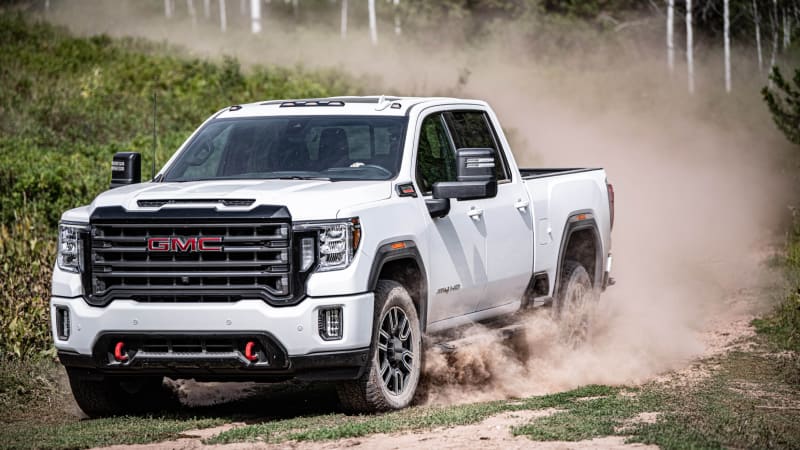
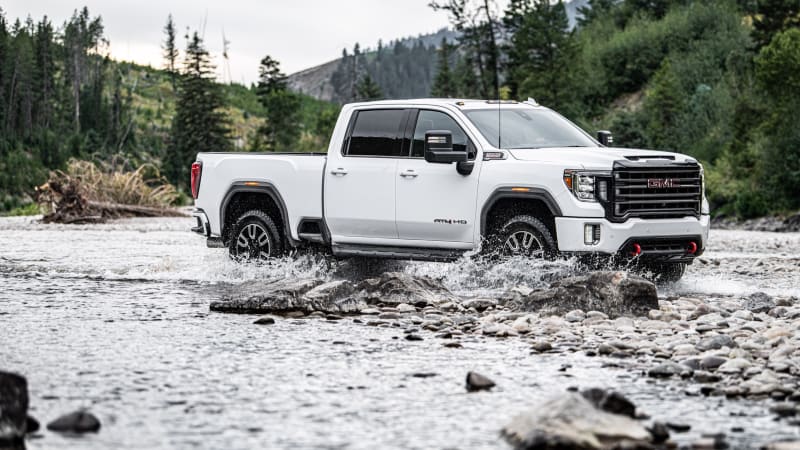
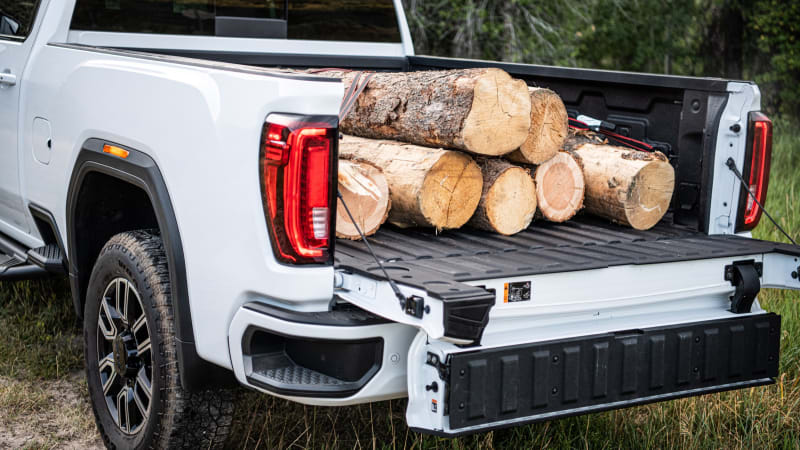
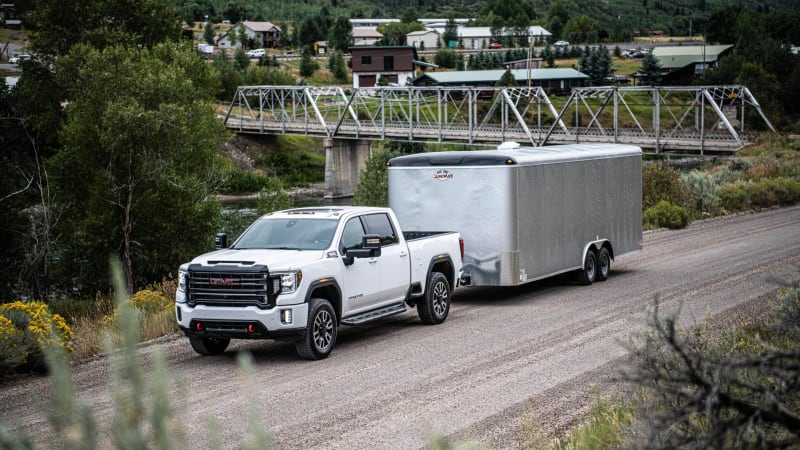
Not only do GM’s truck twins offer the greatest towing capability this side of a commercial semi, they don’t require any specific ordering trickery to unlock capacity. Every GMC Sierra 3500 with the 6.6-liter Duramax diesel engine and dual rear wheels can tow at least 30,000 pounds, regardless of trim level or options load.
There’s a new 6.6-liter gasoline V8, too, which is unfortunately still hooked to a six-speed automatic transmission. Its 401 horsepower and 464 pound-feet of torque look impressive on paper — Ford’s current 6.2 spins out 385 hp and 430 lb-ft (a 7.3-liter gasoline V8 is coming for 2020 with what we’d assume will be class-leading power figures), while Ram’s 6.4 offers 410 ponies and 429 lb-ft. Out in the real world, though, all three of these huge behemoths really cry out for their diesel options, as expensive as they may be.
In the case of the GMC, the Duramax diesel and 10-speed Allison transmission add $9,890 to the sticker and brings with it 445 horsepower at 2,800 rpm, 910 pound-feet of torque at 1,600 rpm, and the confidence that there’s nary a load in America that you won’t be able to tug. We’re impressed with the 10-speed automatic, which doesn’t hunt unnecessarily for gears and shifted with commendable smoothness considering how much torque it’s transferring to the axles.
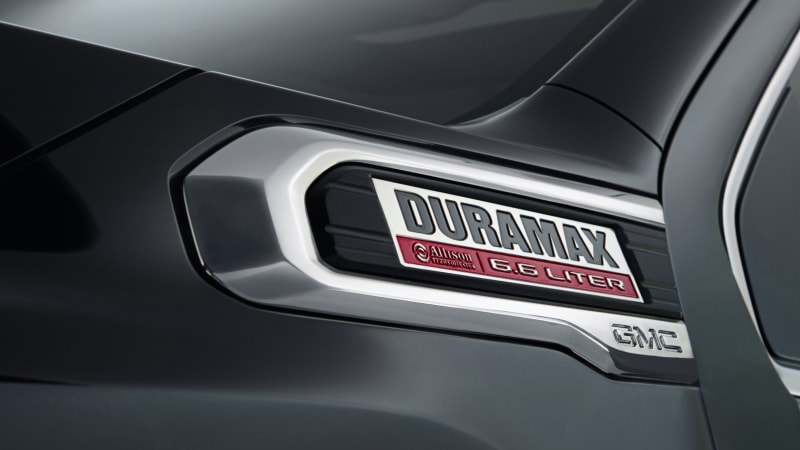

There are a few important techy features that are worth highlighting, too, like the 15 separate trailering camera views available on the truck’s 8-inch LCD infotainment screen. One view in particular that we used a great deal requires an extra camera to be purchased from GM’s parts catalog, then attached to the back of a trailer and plugged into a port near the trailer hitch. The effort is worth it, as the system stitches together a bunch of views and angles to offer the driver a view of the road behind, right through the now digitally transparent trailer.
Also exclusive to the segment is a 15-inch head-up display that can put all kinds of useful information directly in front of the driver, including speed and navigation directions, and a rear camera mirror that allows the driver to see what’s behind the truck regardless of what’s in the truck’s bed. A MyGMC companion app available for Apple and Android phones allows an owner to monitor things like their trailer’s water and propane levels or to remotely operate an RV’s heating or air conditioning.



All of that is good. What’s not so good is the interior. While it’s true that heavy duty truck buyers are likely much more focused on torque and towing stats than interior panel gaps and the quality of plastic trim, it’s equally true that GM’s fullsize truck interiors sit in third place in a class of three. The RAM HD sets the standard, particularly in upper-level trims and with its massive optional 12.3-inch interior screen, and the Ford Super Duty isn’t far behind. And then there’s the GM twins, with an oddly bulbous and plasticky look that looks a generation or two behind by comparison.
This low-rent interior doesn’t feel quite as galling in a truck wearing a Chevy badge up front, but GMC makes no bones about the fact that it’s targeting a higher class of clientele, focusing particular attention on its Denali (that’s the top-level Denali trim in the images above) and newer AT4 trims. According to GMC, if Denali were broken out into its own badge separate from its parent company, its $54,000 average transaction price would put it just behind Mercedes-Benz and ahead of Jaguar, BMW and Audi in the United States. A Sierra Denali 3500 Crew Cab starts at a little over $66,000 but most trucks will cost significantly more. One of our Duramax-powered testers rang the register at around $80,000.
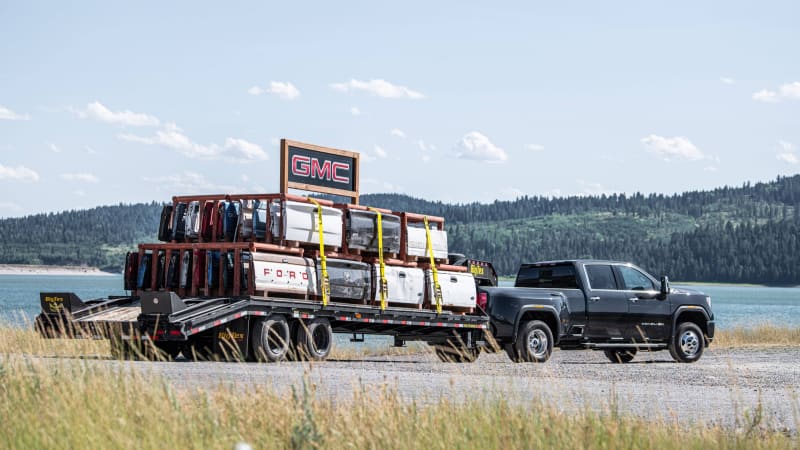
Consumers who buy a GMC Sierra 2500 or 3500 in Denali trim are paying for a premium experience but getting an interior that falls well short of premium experience expectations. That’s a shame, because the rest of the truck is quite good. Consider its class-leading capabilities, sharp exterior sheetmetal in its various forms, and that 90% of Sierra HD buyers are going to use their trucks for towing. We think that makes the 2020 Sierra HD a compelling enough proposition to offset its disappointing interior.
Auto Blog
via Autoblog https://ift.tt/1afPJWx
August 27, 2019 at 02:48PM
